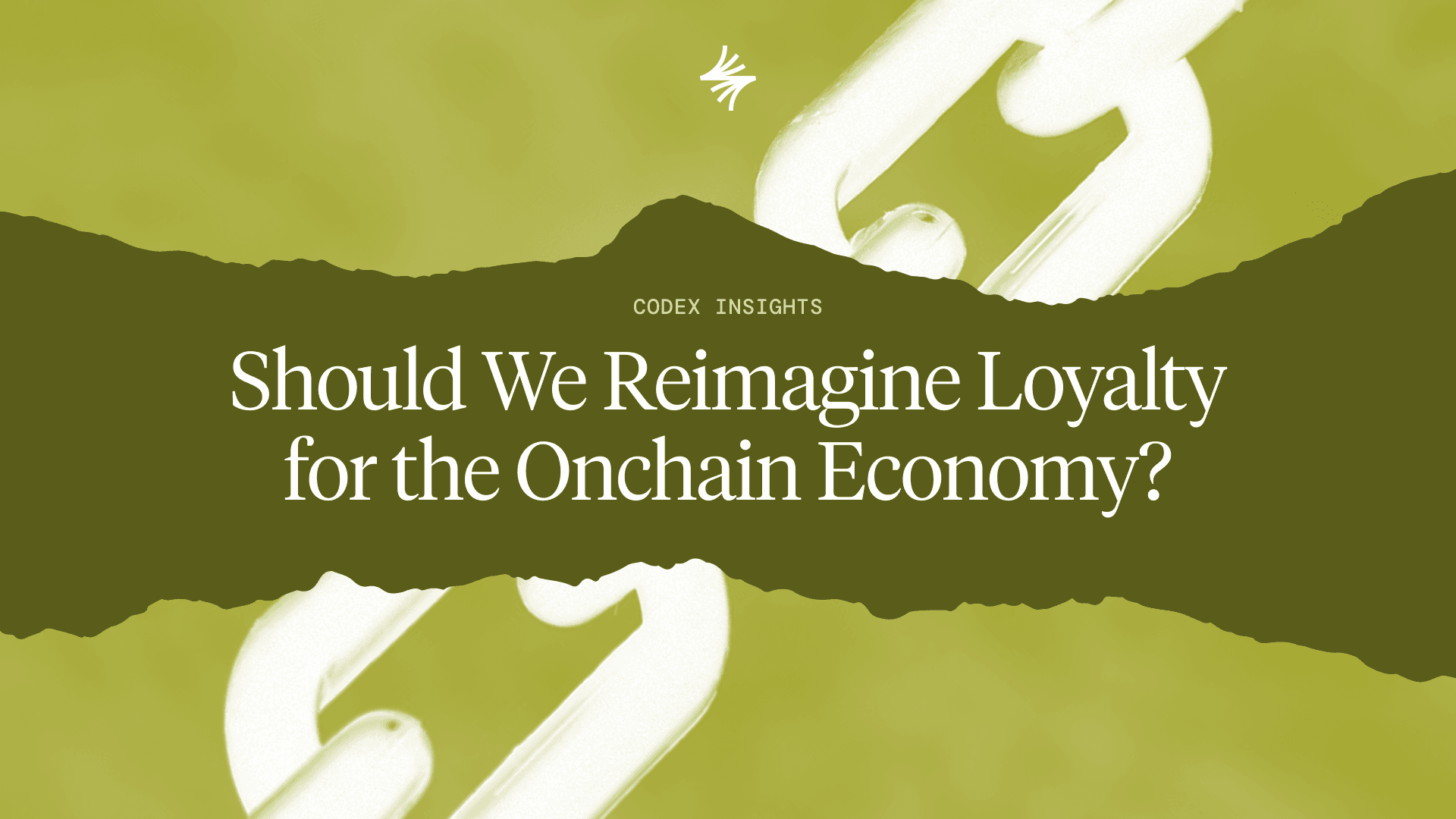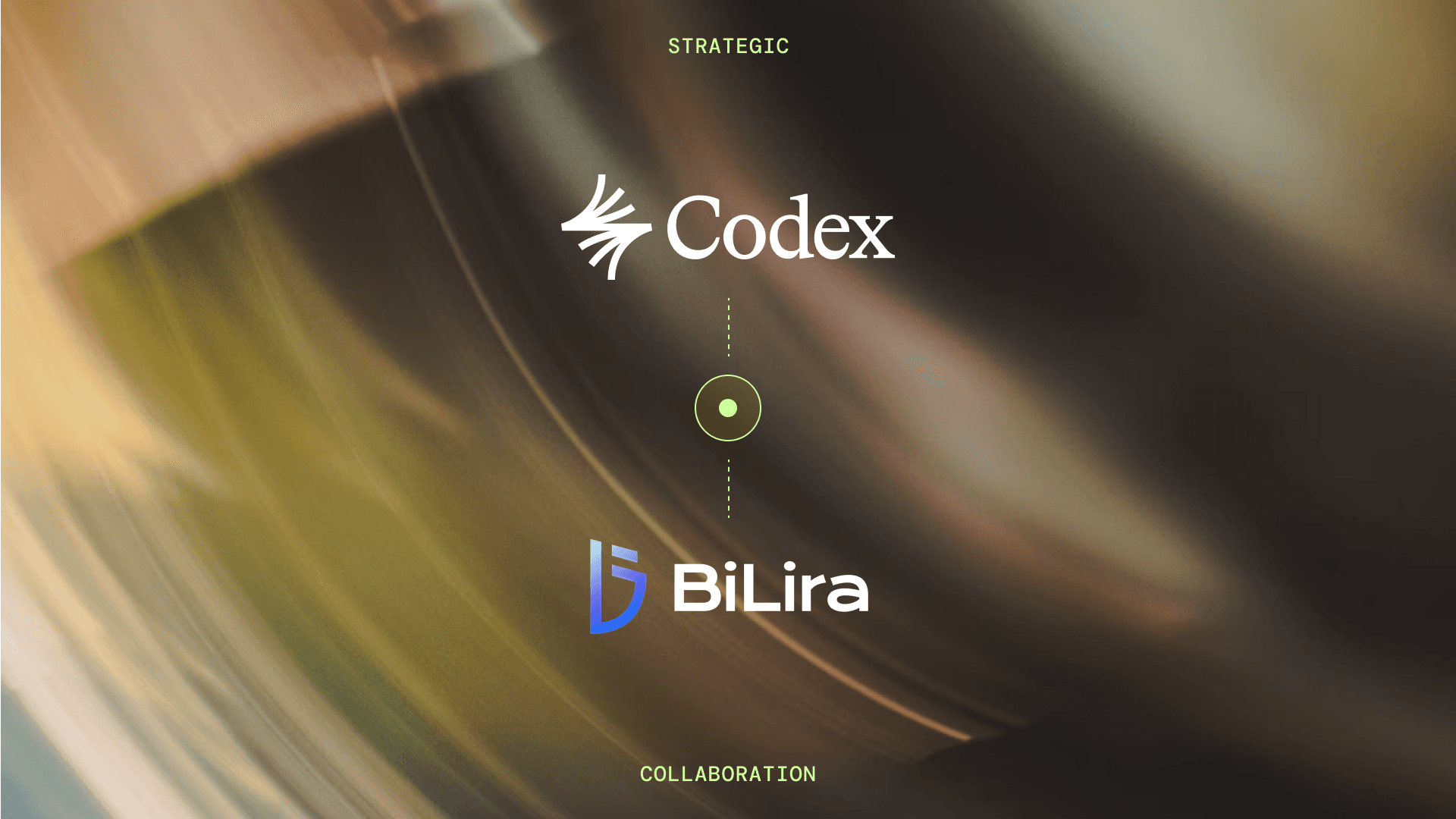Blog
Building a Dedicated Stablecoin Chain on Ethereum
.png&w=3840&q=80)
Stablecoins have already found a strong product-market fit, and Ethereum remains the epicenter of their activity. With its long track record, unmatched network effects, and role as the ultimate settlement layer, Ethereum is the foundation on which stablecoins thrive.
Codex builds on this foundation by extending Ethereum’s capabilities with fiat-compatible primitives through native onramp and offramp transactions, compliance and identity mechanisms, first-class FX, and finality guarantees, enabling the real-world use cases that enterprises and institutions require.
The future of onchain finance will be built on Ethereum and Codex will serve as its dedicated stablecoin chain.
A New Architectural Approach for Stablecoins
Stablecoins have become a cornerstone of the crypto economy, serving as a vital bridge between traditional finance and the world of digital assets. While they have found a home on general-purpose blockchains, particularly Ethereum, their full potential remains untapped due to inherent limitations.
With nearly 60% of the stablecoins issued on Ethereum, it has proven its value as a foundational layer. We don’t need another Layer 1. Ethereum has a long track record, unparalleled network effects, and can serve as the ultimate settlement layer for the digital economy.
The time has come to build on this foundation and implement an Ethereum stablecoin layer: a dedicated blockchain tailored to the specific needs of stablecoins and their primary users, such as enterprises and institutions.
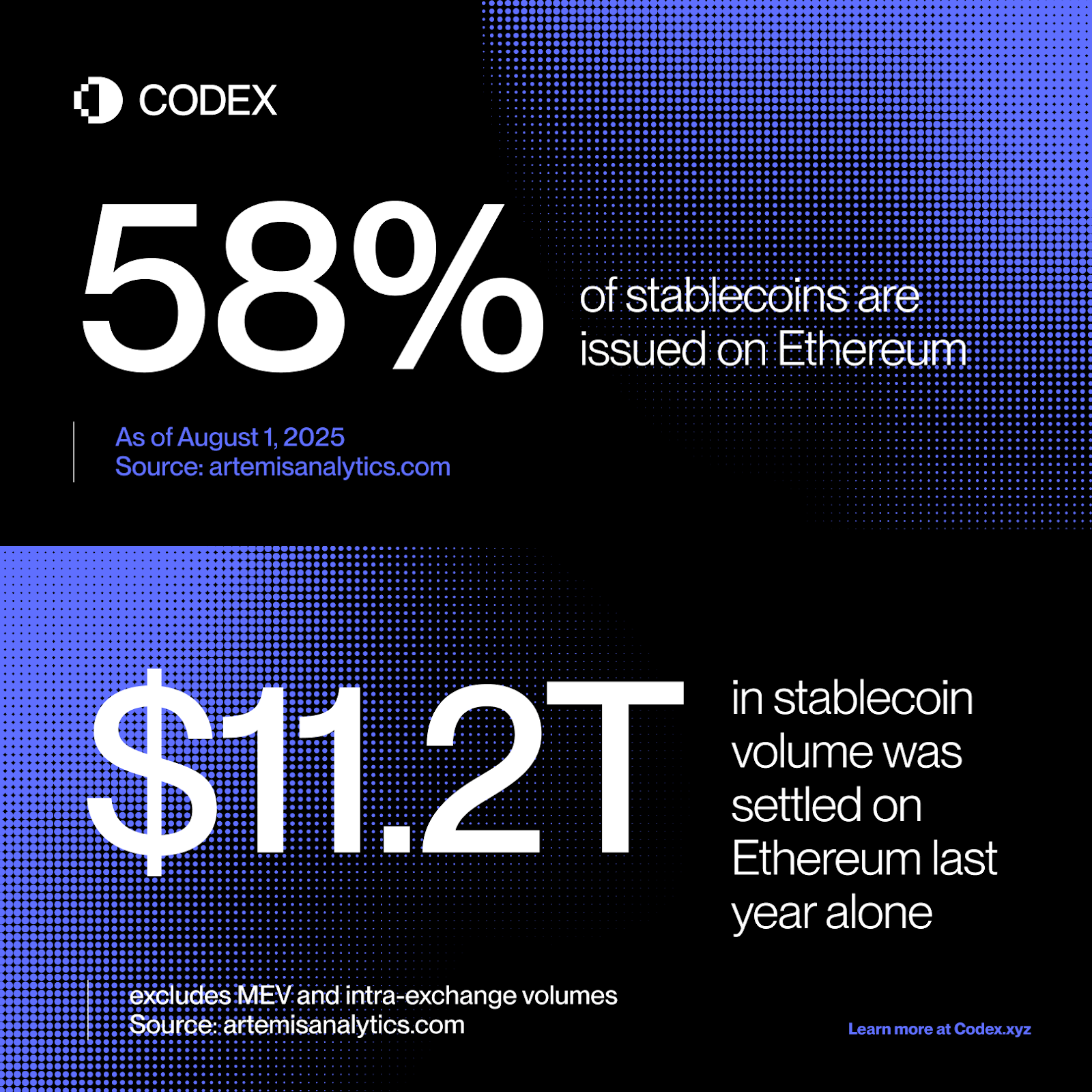
A Specialized Layer for Specialized Needs
Just as a modern financial system distinguishes between different layers of functionality, so too must the stablecoin ecosystem. Consider the traditional finance rails, where Fedwire acts as a foundational payment rail for settling large-value transfers between banks.
On top of this, card schemes such as Visa and Mastercard provide a specialized layer for card-based transactions. Visa solves for the specific needs of its users: instant card authorizations, trust in the ecosystem rules, and foreign currency conversion, while still relying on the underlying settlement infrastructure.
Similarly, Ethereum can serve as a robust and well-vetted settlement layer, while Codex, a Layer 2 blockchain purpose-built for stablecoins, can provide the specialized capabilities required for enterprise adoption. This new layer would extend Ethereum’s functionality by addressing the unique demands of stablecoin users, creating a more efficient, compliant, and scalable system for a digital economy, while preserving the security and credibility of Ethereum.
What Visa did for global consumer payments, Codex will do for cross-border and institutional payments with stablecoins.
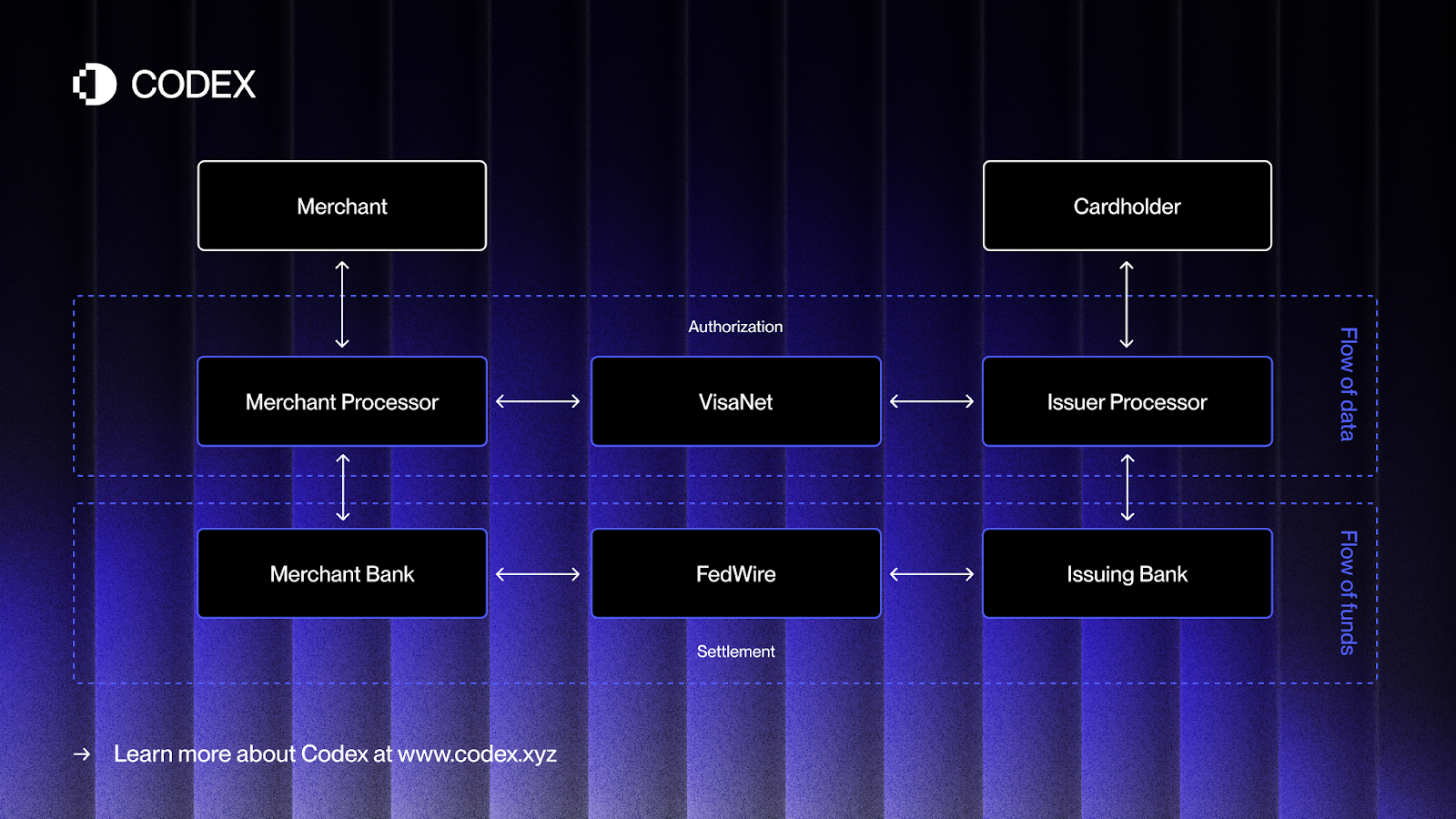
Key Elements of an Enterprise-Grade Blockchain
A purpose-built stablecoin blockchain built on top of Ethereum enables scalability, predictable costs, embedded compliance, and seamless fiat connectivity, blurring the lines between traditional finance and onchain finance, and paving the way for stablecoins to become a global payment standard.
- Scalability and Predictable Costs: A key benefit of an L2 is its ability to bundle thousands of transactions and settle them as a single entry on Ethereum. This process makes transactions significantly faster and cheaper, addressing a primary bottleneck for enterprise-grade payments.
- In-Built Compliance Measures: For stablecoins to achieve mass adoption, they must operate within the global regulatory framework. A dedicated blockchain can embed compliance measures directly into its protocol, enabling automated identity verification, policy-based transaction screening, and the ability to prevent illicit activity at the point of execution under specific legal and regulatory conditions.
- Native On/Offramp Mechanisms: The process of converting between fiat and stablecoins is often fragmented and costly, and is perceived as the key blocker to wider adoption of stablecoins. A dedicated stablecoin chain could expose a protocol for regulated banking and payment providers, enabling seamless fiat on and offramps.
- Privacy of Transactions: For enterprises, transaction privacy is not about secrecy; it's about commercial necessity. To protect their trade agreements and partnerships, enterprises need to shield payment details from competitors. A dedicated stablecoin blockchain can employ privacy-preserving cryptographic proofs to ensure that sensitive payment information remains confidential while allowing auditable and verifiable settlement under regulatory requirements.
Codex meets these requirements while inheriting the security and trust of Ethereum, creating a stablecoin layer purpose-built for real-world finance.
Implementing Enterprise Payments Requirements Onchain
Codex Chain is a high-throughput, EVM-equivalent Layer 2 blockchain purpose-built for stablecoin-native payments, FX, and settlement. Unlike general-purpose chains, Codex is optimized at every layer for stablecoin-native applications, including fee design, gas abstraction, and compliance.
We aim to eliminate fiat <-> crypto friction by building programmable, secure, and verifiable onramp and offramp transactions, compliance, identity, FX, and settlement finality. We are designing the Codex chain around a few key principles and enablers:
- Transaction-native settlement: support of gas abstraction, which enables fees to be denominated in the same stablecoin or currency used in the transaction and eliminates the need for a secondary token in user flows, while remaining fully compatible with existing EVM gas models.
- A purpose-built EVM rollup with enhanced fee dynamics: dynamic pricing mechanisms based on transaction characteristics that go beyond today’s first-price model, reducing bidding wars and improving predictability for users and market makers.
- FX-aware mempool logic: enabling optimized multi-currency ordering that minimizes conversion costs and creates more efficient cross-currency liquidity.
- Prioritized cancel queues: allowing fast cancellation or replacement of transactions, lowering risk exposure for market makers and reducing spreads in FX trading.
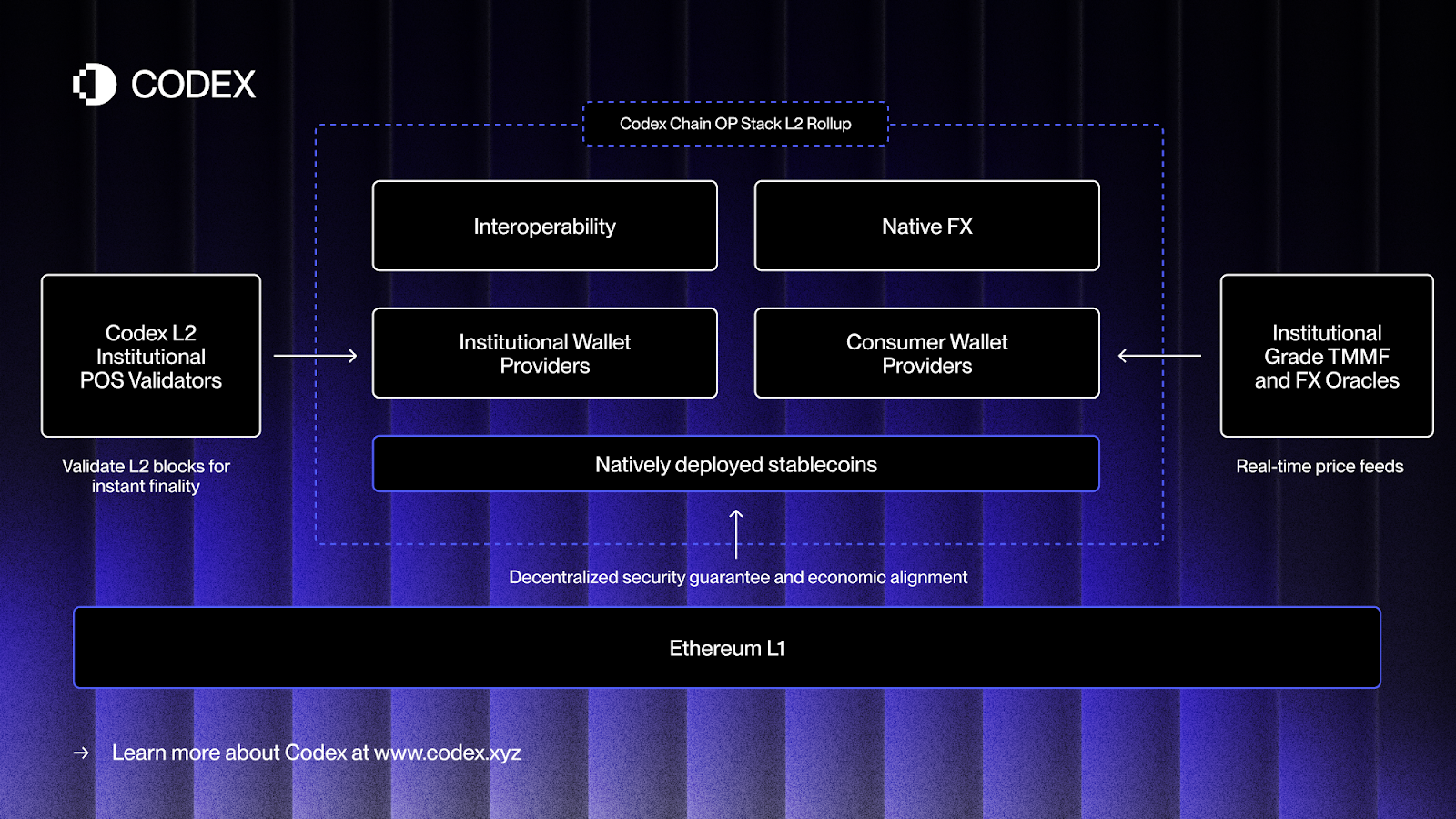
- Canonical predeployed onchain registries linking EOAs and smart accounts to verified KYB/KYC tiers, attestations, credentials, and banking rails, updated via institutional-grade oracles, and verifiable on the EVM through gas-optimized precompiles.
- Embedded compliance checks: Anti-Money Laundering and Anti-Financial Crime logic integrated at the execution environment level, enabling compliance screening as part of core transaction validation.
- Canonical onchain registries linking addresses to verified identities and permissions, enabling trusted, standardized compliance references.
- Specialized precompiles: efficiently process proofs of identity and compliance within the EVM, supporting advanced workflows such as verifying eligibility, validating permissions, or enforcing jurisdictional rules - all as part of core onchain execution.
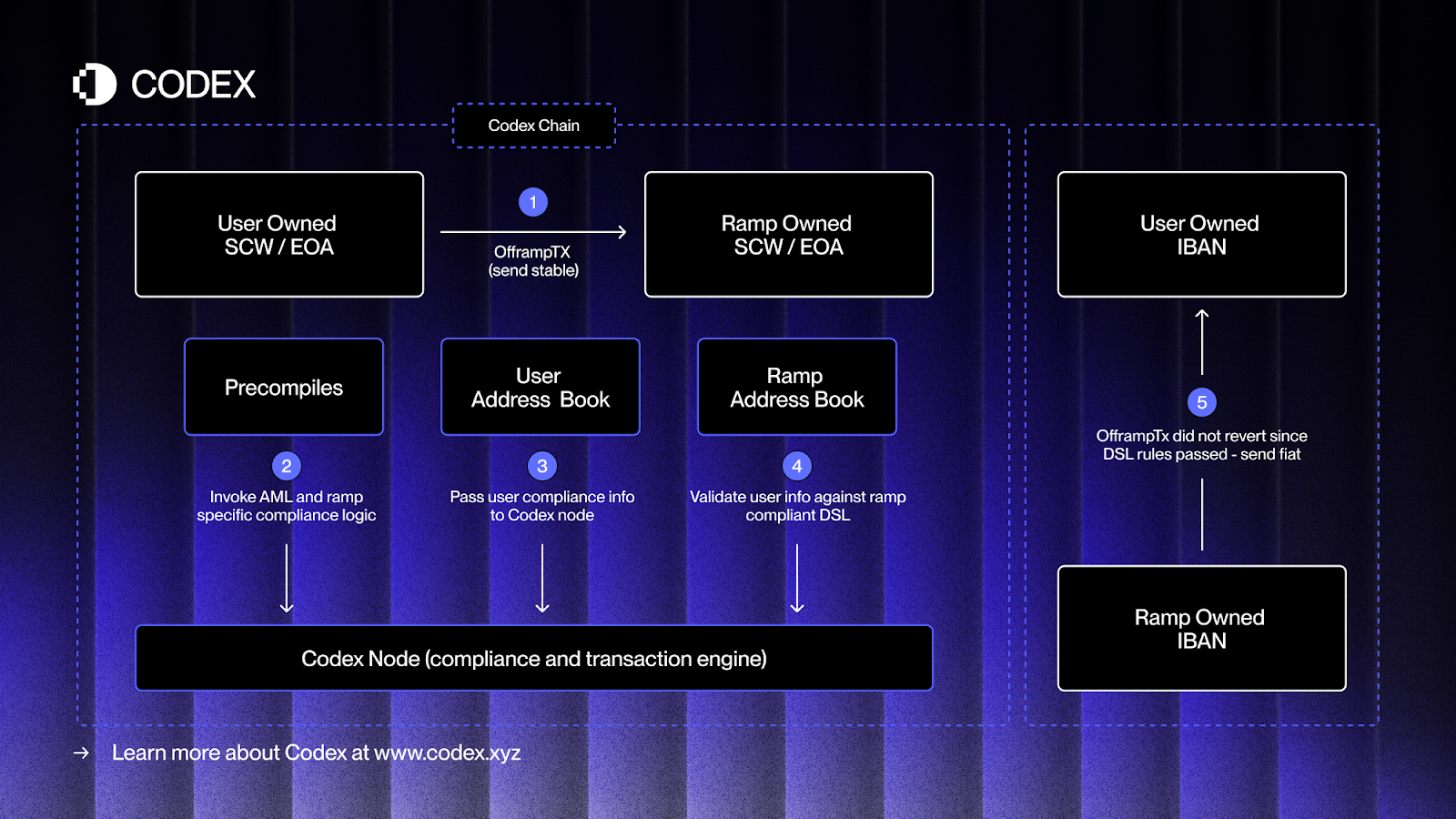
- Fiat-compatible primitives designed to reduce friction in on/offramp flows. We are exploring transaction models that can atomically combine value transfer, compliance evaluation, and fiat settlement instructions.
- Seamless on/offramp flows, enabling reliable movement between blockchain and fiat banking systems.
- Atomic execution, combining token transfer, compliance evaluation, and settlement instructions in a single step across all layers.
- All-or-nothing semantics, ensuring predictable outcomes without partial failures or funds being locked across crypto, compliance, and fiat systems.
- An economic assurance network of participating ramps with chain-level slashing enforcement of timely fiat payouts and honest sequencing with fast finality.
- Fast finality, with blocks validated by a decentralized validator set before posting to Ethereum, ensuring blocks are effectively finalized without waiting for L1 confirmation.
- Validators tied to fiat settlement obligations, enabling direct alignment between consensus and real-world payments.
- Chain-level slashing for late payouts or dishonest sequencing, enabling strong economic guarantees for users and merchants.
Codex combines Ethereum’s security with purpose-built features for payments, FX, compliance, and fiat integration, creating a blockchain designed for enterprise stablecoin transactions. The result is seamless settlement that removes fiat-crypto friction and brings real-world institutions onchain.
Extending Ethereum, Unlocking the Future
Ethereum has been an exceptional launchpad for stablecoins. A dedicated L2 chain can further extend Ethereum’s security and ecosystem while adding the specialized features enterprises need, such as high-throughput, seamless fiat integration, and built-in compliance.
This is not about replacing Ethereum, but rather extending it by building a purpose-built architecture that will serve as the foundation for the next generation of financial innovation.
The stable door is open. The question is: what will you build on the other side? Let’s chat: info@codex.xyz.
Related Articles
About Codex
Codex is a stablecoin infrastructure company. Its mission is to fulfil the oldest and most ambitious dream in crypto: a universal electronic cash system. The firm is backed by Dragonfly Capital, Circle Ventures, Coinbase Ventures, Primitive Ventures, Cumberland, Wintermute Ventures, CMT Digital, Mirana Ventures, Foresight Ventures, Reverie, Hustle Fund, and Selini Capital.
